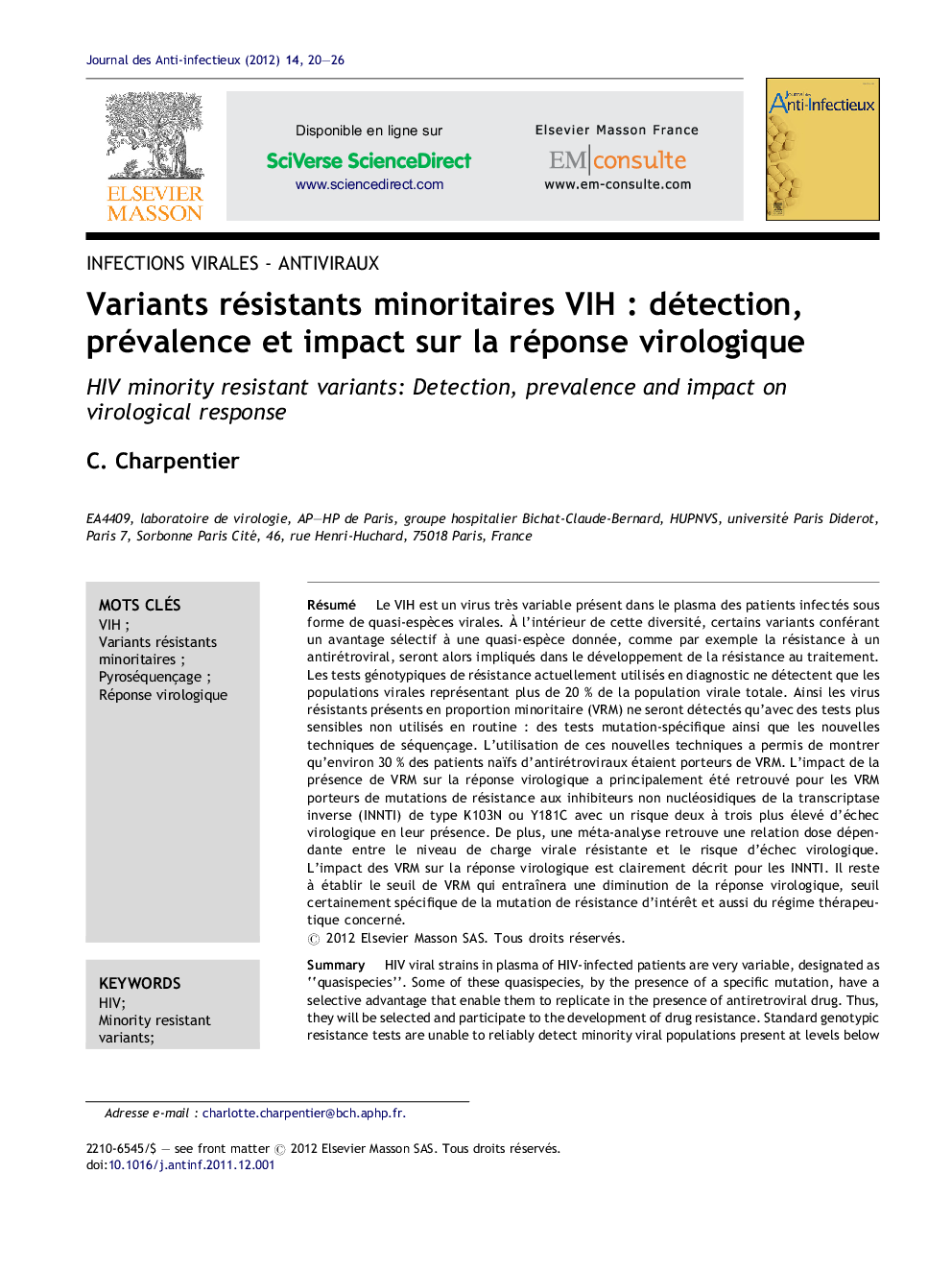| Article ID | Journal | Published Year | Pages | File Type |
|---|---|---|---|---|
| 3405502 | Journal des Anti-infectieux | 2012 | 7 Pages |
Abstract
HIV viral strains in plasma of HIV-infected patients are very variable, designated as “quasispecies”. Some of these quasispecies, by the presence of a specific mutation, have a selective advantage that enable them to replicate in the presence of antiretroviral drug. Thus, they will be selected and participate to the development of drug resistance. Standard genotypic resistance tests are unable to reliably detect minority viral populations present at levels below 20%. Thus, minority resistant variants (MRV) will only be detected by the use of more sensitive tests. These latter are not used in clinical practice and are based on two main approaches: point mutations assays and newer sequencing technologies. The use of these more sensitive techniques showed the presence of MRV in about 30% of patients who never received antiretroviral drugs. The impact of the presence of MRV on the virological response has mainly been described for the non-nucleosidic reverse transcriptase inhibitors (NNRTI) drug class, with MRV exhibiting K103N or Y181C showing a two or three-fold increased risk of virological failure. In addition, a recent meta-analysis showed a dose-dependent relationship between absolute resistant viral load and the risk of virological failure. The impact of MRV on virological response is now clearly demonstrated for NNRTI. More studies are needed to determine a cut-off value for the detection of MRV above which the risk of failure increases. This threshold may be mutation- and regimen-specific.
Related Topics
Health Sciences
Medicine and Dentistry
Infectious Diseases
Authors
C. Charpentier,
